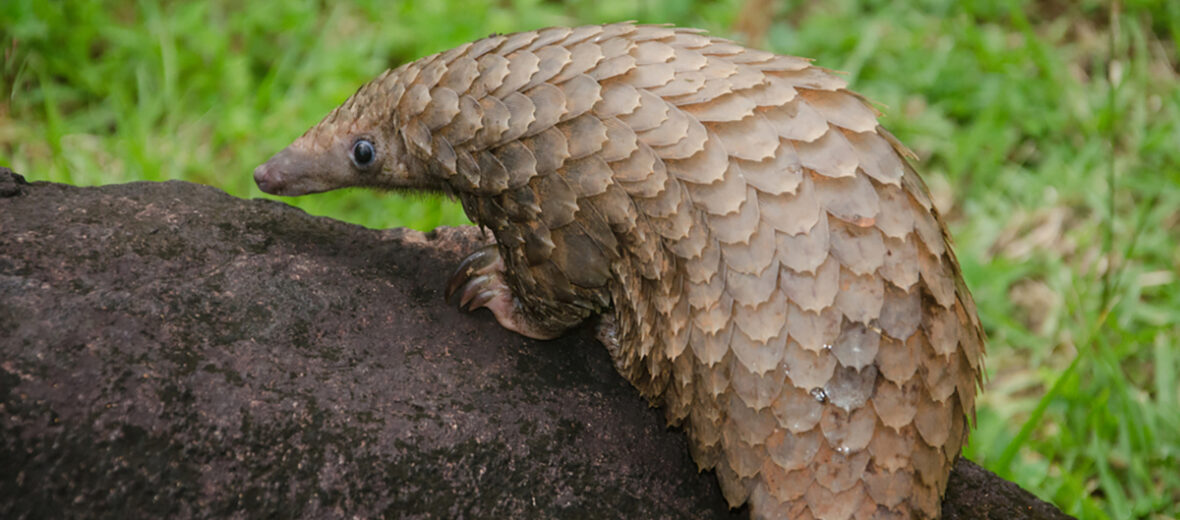
The tree pangolin, aka three-cusped pangolin or white-bellied pangolin, can be found in western and central Africa. They are the most frequently seen of the African forest pangolins. They prefer forest-savanna mosaics, lowland tropical moist forests, and fallow land (land that is left uncultivated for 1 – 2 seasons to allow the soil to recover). These critters unfortunately face the threats of habitat destruction at the hands of agriculture, mining, and logging; hunting; trapping; and climate change (resulting in severe droughts and/or flooding. The IUCN lists them as Endangered. Their populations are also decreasing.
First the Stats…
Scientific name: Phataginus tricuspis
Weight: Up to 3.4 lbs.
Length: Up to 17 inches, plus up to a 24 inch tail
Lifespan: Up to 13+ years old
Now on to the Facts!
1.) Tree pangolins are solitary and only come together to mate.
2.) They are nocturnal (active at night).
3.) Although mainly arboreal (spend their lives in trees), they can walk on the ground on not only all fours, but also on just their hind legs; using their tail as a balance.
4.) These creatures are able swimmers too.
5.) If threatened they, like other pangolins, can also coil into a tight ball and use their scales to protect their soft parts.
But wait, there’s more on the tree pangolin!
6.) The tree pangolin’s diet consists of ants and termites; plus the occasional soft bodied invertebrate.
7.) Females undergo up to a 150 day gestation (pregnancy) that yields a single pangopup.
Did you know…?
These slow critters move at speeds of up to just 3.11 mph, but if being chased they can run at speeds of up to 5+ mph.
8.) Pangopups ride on mom’s tail for up to 3 months.
9.) They are weaned at 3 months, and leave mom at just 5 months old.
10.) When feeding, they will close their eyes, nostrils, and ears to avoid being bitten or stung by ants.
But wait, there’s still more on the tree pangolin!
11.) While walking, they will curl up their large claws and walk on their knuckles.
12.) The name pangolin hails from the Malay word “pengguling,” which translates to “something that rolls up.”
Did you know…?
Lacking teeth, these critters depend on their long, sticky tongue to scoop up the swarming ants and termites. They can extend their tongues up to the length of their body.
13.) The scientific name Tricuspis is Latin and means 3 points. This is in reference to the shape of their scales.
14.) They may have sharp claws, but they don’t use them for defense. Rather, if rolling up into a ball doesn’t work, they can also spray a nasty smelling musk at their attacher; much like a skunk.
15.) Leopards, hyenas, and pythons prey on tree pangolins.
Now a Short Tree Pangolin Video!
This video talks about pangolins in general.
Be sure to share & comment below! Also, check out the Critter Science YouTube channel. Videos added regularly!
Want to suggest a critter for me to write about? Let me know here.
Some source material acquired from: Wikipedia & IUCN
Photo credit: Ehbidault



